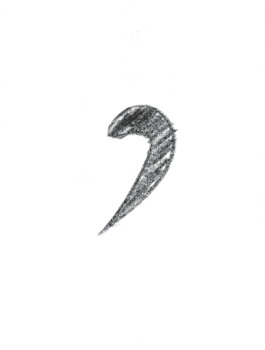Are conjunctions necessary? Posted by bota on Mar 23, 2021 in Conjunctions, Grammar, language, punctuation
Если… а… но… Three perhaps most commonly used сою́зов в ру́сском языке́ (conjunctions in Russian), aside from “и”, and exactly how much I got to say as a kid when trying to convince my parents to get me дома́шнего пито́мца (a pet). It usually went like this:
| “Если…” “Собаки не будет” “А…” “Кошки, тем более” “Но…” “Даже не обсуждается” | “If…” “There will be no dog.” “And…” “Especially no cat” “But” “End of discussion” |
|---|
Since then, some things stayed the same – my parents are still averse to having pets, к большо́му сожале́нию моих брати́шек и сестрёнки (much to my siblings’ disappointment). I, however, have learned to navigate this world without overly relying on сою́зы (conjunctions). Would you like to know how? The answer is: бессою́зные сло́жные предложе́ния (sentences without conjunctions).
To use or not to use
While conjunctions do serve many useful purposes, like connecting, contrasting, and elaborating on objects and actions between the clauses of a sentence, there are even smaller grammatical units that can effectively convey the same meaning: зна́ки препина́ния (punctuation signs). I guess, you could say this post is partially about the ways we use запяты́е (commas), двоето́чия (colons), and тире́ (dashes) in Russian. More on the intricacies of punctuation and typography here, and comma abuse here.
Punctuation signs carry only the quarter of linguistic weight in sentences without conjunctions. The real hero, I would argue, is your intonation (интона́ция). Read the following sentences and pay attention to how your intonation changes:
Определи́шься — позвони́. (Call me when you make up your mind.)
Я приняла́ реше́ние: забыть об этом стра́нном дне навсегда́. (I decided to forget about that weird day forever.)
“Эх, ты, стару́ха! Ты по ко́робу поскреби́, по сусе́ку помети́; авось муки́-то наберёшь!” (Ah, old woman. If you scrape out of the flour box and sweep out the bin, you’ll get some flour!)
See how you pause for the dash, the colon and the commas? Now, that’s a great start.
После́днее предложе́ние взято из всем изве́стной ска́зки ‘Колобо́к’ (the last sentence is from a famous Russian fairy tale “Kolobok” and if you look at many other fairy tales, literary texts, and superstitions, you will notice a lot of бессою́зных предложе́ний. Also, it’s fair to say that sentences without conjunctions are a better fit for verbal rather than written communication.
Дава́йте рассмо́трим, когда испо́льзовать запяту́ю, а когда то́чку с запято́й (let’s take a look at when to use a ‘comma’ and when to use a ‘semicolon’).
Use то́чка с запято́й (a semicolon or literally ‘a period with a comma’) if one or both clauses of the sentence already have a comma in it.
Ма́ма с ба́бушкой прие́хали у́тром; па́па, усну́вший в за́ле, не слы́шал их звонка́ в две́рь. (Mother and grandma arrived in the morning; father, who fell asleep in the living room, didn’t hear them ringing the door.)
Use запята́я (a comma) to show that things are happening at the same time or in sequence.
Она́ открыла но́ты, поста́вила но́гу на педа́ль, опусти́ла па́льцы на кла́виши.
(She opened the piano sheets, put her foot on the pedal, lowered her fingers on the piano keys.)
Personally, тире́ (the dash) is my favorite one to use — про него́ в сле́дующем бло́ге! (more on that in the next blog!)

Build vocabulary, practice pronunciation, and more with Transparent Language Online. Available anytime, anywhere, on any device.







